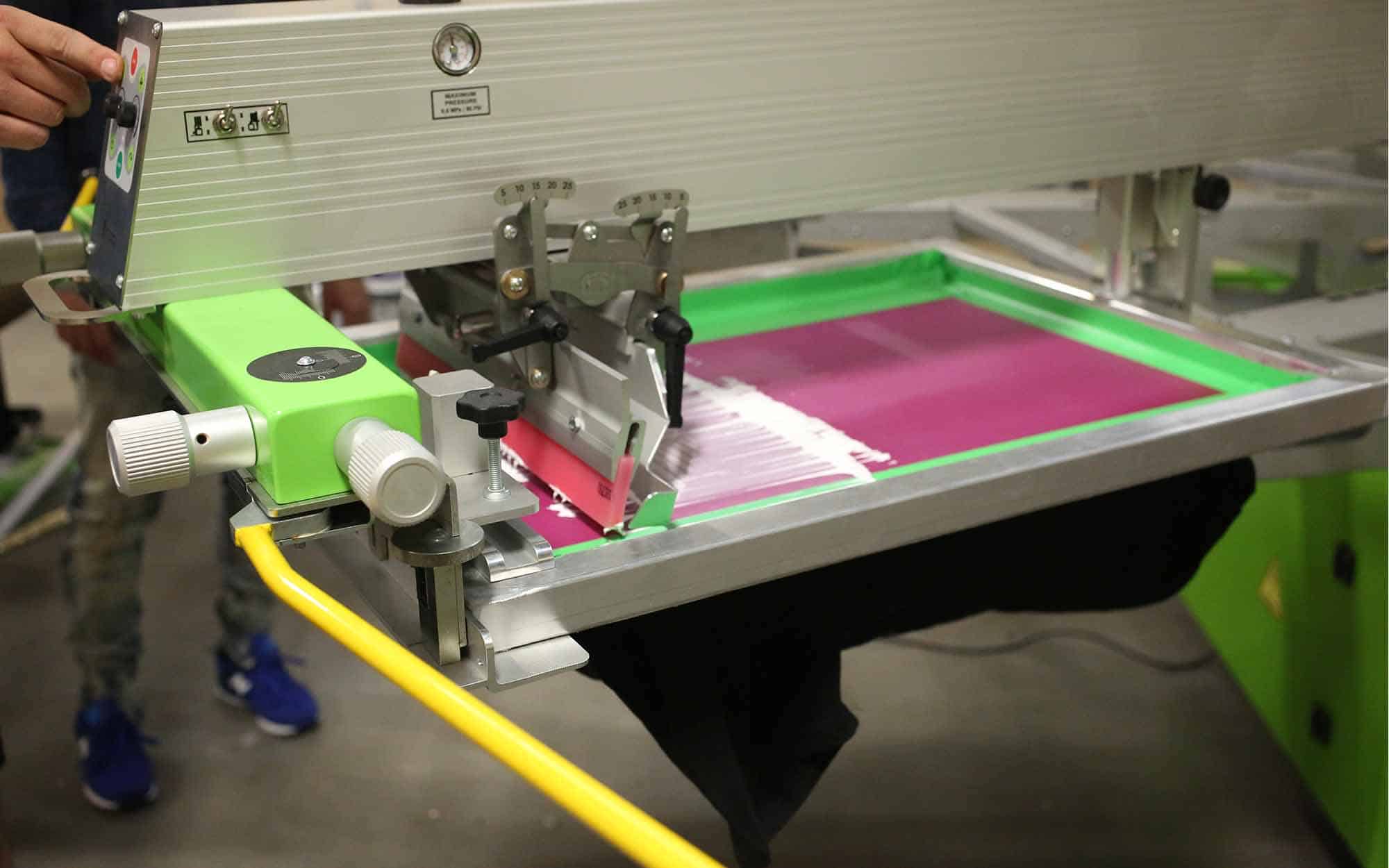
Whereas digital printing is better if you have smaller quantities, you need changeable / variable information on the print or if you need your print urgently. Screen printing is better if you need durable print that is used in a harsh environment, you are printing large quantities or if you need an exact colour match / specialist ink.
Silkscreen vs screenprint serial#
Digital printing can include variable information such as names, addresses, serial number, barcodes. Digital printing is a modern printing method that sends the design directly to the printer, this fast set up time is why it has a shorter lead time. Screen printing only prints one colour at a time, so several screens are required to produce a multicoloured design, but it can use very specialist inks to create innovative print finishes such as Spot UV, Rub Remove (scratch cards) & Scratch & Sniff. A fine mesh is used as the stencil, the ink is then forced through the unblocked areas of the mesh and onto the printing surface.


Screen printing is a traditional method that is based on the technique of stencilling. Understanding this method when compared to heat pressing is very important if you want the perfect apparel for your organization or upcoming event. It is relatively cheap and often performed using limestone as the rock surface. The two terms refer to the same technique, screen printing is just the newer term, and silk screening is an older term. Lithograph ink, derived from the Latin root 'lith,' meaning stone, and 'graph,' meaning to draw, is a method of printing in which a stone or metal plate is used to transpose an image onto the final product. The actual printing processes involved in both of these printing methods also differ quite considerable. The short answer is no there is no difference. This print method can produce photographic quality prints. Digital flatbed printing can also print onto various types and thicknesses of materials as well as paper, it can print both small and large print runs and will have a shorter lead time. This method only applies one colour at a time and isn't always suitable for complex graphics. If on the other hand the surface area of your item is quite large and you require a big print then screen printing will make much more sense.Screen printing is a versatile method which uses durable inks, it can print on thick materials and is better suited to large print runs. Screen printing (serigraphy) is a popular printing method, using a process that presses ink through a mesh screen in order to create a printed desig non. The same goes for if you are printing on a 3D or uneven surface. Pad printing is also excellent for printing on unusual shapes. If your product is small and features intricate detailing, then pad printing is going to be the best option for you. Before determining which printing method you are going to use, it’s best to study your product and consider the results you are hoping to achieve. When choosing between pad printing and screen printing, it’s important to consider which process is best for your application. It is ideal for carrying out quick and effective printing on larger designs, as opposed to those with intricate detail. Today’s screen printing equipment is highly sophisticated and largely automated. The technique actually dates back to early China (between 9 AD). The stencil then forms an area through which ink or other substances can be transferred.

The process of screen printing involves creating an ink-blocking stencil and applying it to a woven mesh. Also, if you need to print fine print, you will find that the resolution of pad printing is far better than that of screen printing. Pad printing is also suitable for delicate and mechanically sensitive products. It doesn’t matter if your items are curved or have an uneven surface, using this printing method will still achieve a quality print. One of the main advantages of using pad printing is that you can use it to print on three dimensional surfaces and products of all shapes and sizes. The pad is then pressed onto the object and left to air dry. Simply put, the pad printing machine holds both the pad and the product steady and then presses the pad into an ink plate, which has been tailored to the shape of your logo or artwork. The process involves transferring ink from a silicone pad onto the item you want printed. Here are the key differences between the two: Pad printing Pad printing and screen printing are the methods commonly used for marking medical and electronic devices.


 0 kommentar(er)
0 kommentar(er)
